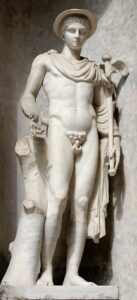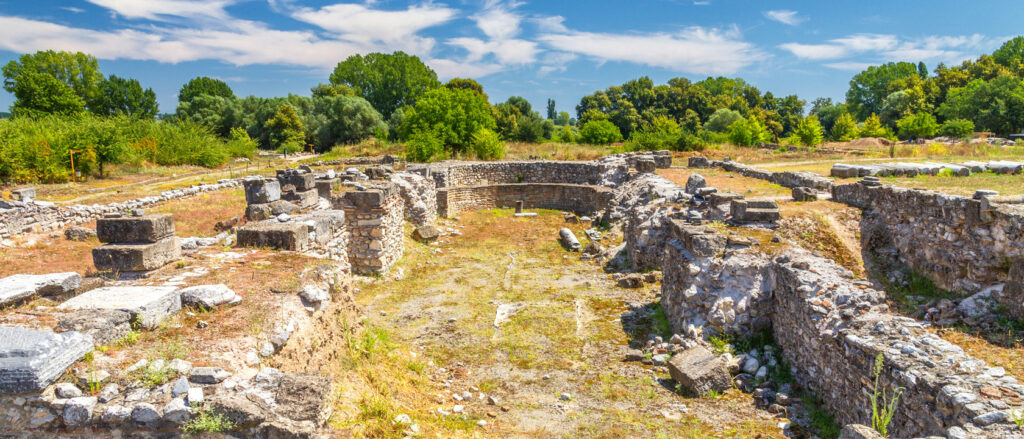Maintaining the World: Greek Gods – Part I
by Dr Heather Sebo
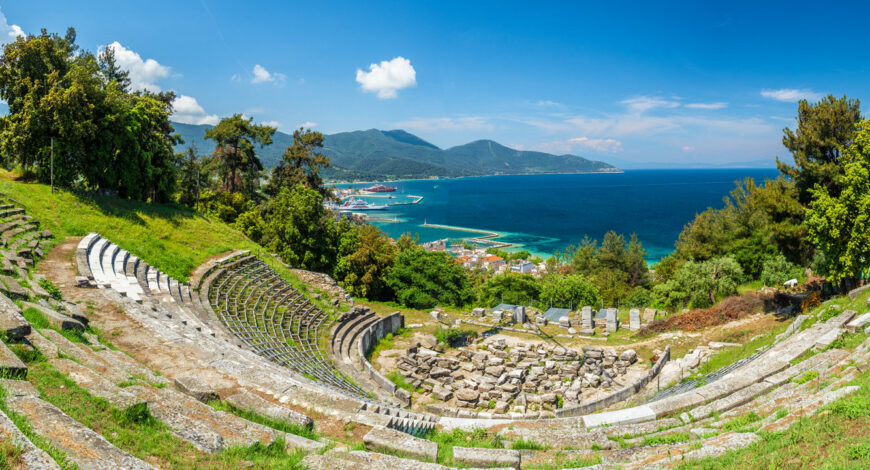
Whether or not one has a religious faith, we in the modern world are used to the idea of a single, universal, all-powerful, all-knowing God, usually male, who controls every detail of life and every aspect of the universe. The Ancient Greek conception is in direct contrast to this. The Greeks imagined a world full of gods and minor powers. These divinities are not idealized, and they are not perfect. They are also not so very interested in human beings. Sometimes minor powers are very local, like the nymph Peirene, whose inexhaustible tears feed the spring waters at Corinth. But, in general, there are twelve major gods who control the human domain and the powers of nature; each of these gods has a specific sphere of influence, although, as we shall see, the various domains often overlap and complement each other. This ancient view is often presented, I will say misrepresented, as somehow quaint, simple, even childish. Indeed, stories of the Greek gods are most often found in children’s story books.
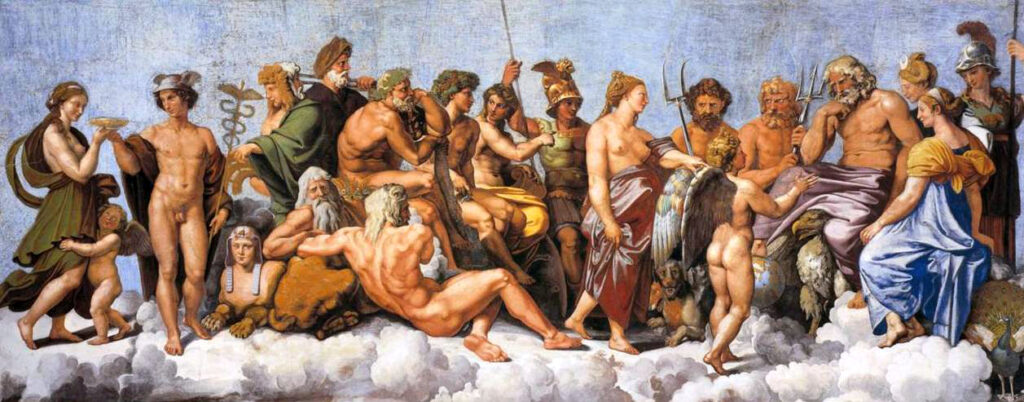
I would like to demonstrate a little of the complexity, intuitive logic and beauty of the Greek system. It is not static; it changes as circumstances change, and, to my mind, its greatest strength is that there is no orthodoxy; you don’t have to be a believer. The system remains “good to think with” even if you understand it all as metaphor, as many of the ancient poets seem to have. So let’s start with the goddess Athena, who is very often characterized as a goddess of war. Here, immediately, we encounter what will turn out to be a useful complexity because Zeus’ son Ares is also described as a god of war. So, have the Greeks doubled up, are there two gods of war? Well yes and no! The answer is that the Greeks make a crucial distinction between two very different kinds of war. Ares is the god of manic violence, brutality and aggression; in other words, war for its own sake. Athene’s concern is defensive war, the kind of war that is necessary to protect the community when it is under attack from the savagery of those spurred on by Ares. The Greeks hated Ares, and in Homer’s Iliad there is a wonderful moment when Athene flattens him. But the Greeks also recognize, as we surely must, that Ares’ barbarism is a reality.

In fact, Athene is not a war goddess, she is a city goddess. Her involvement in war is part of a larger, far more sophisticated conception. Her primary domain is what the Greeks called the polis, by which they mean the urban life of a community. In this role, Athene is the patron of civilization and culture, of the crafts, the skills, the arts and especially the kind of intelligence that is essential to these pursuits. Athene’s kind of intelligence is not abstract and speculative, but the creative, active, street smarts that lead to innovation and invention. She is equally responsible for the science of navigation by the stars and for inventing the harness and bit. She often coordinates with Hephaistos the craftsman god, the blacksmith god of metallurgy, master of the practical skills necessary to bring Athene’s inventions into being.
Left: Thetis Receiving the Weapons of Achilles from Hephaistos; Right: So-called “Hermes Ingenui”, Musei Vaticani
In Greek iconography, we often see Athene in company with Hermes, wearing his winged sandals and broad brimmed hat. Hermes is often described as the god of travellers but again, this does not adequately describe his far larger and more significant sphere. Hermes is a boundary crosser, a messenger, mediator, diplomat; in other words, a god of transactions. Hermes presides over communications of all kinds, financial exchanges, entrances and exits, the crossing between sleeping and waking and from life to death. We often see Hermes’ image on tombstones in the role of psychopomp, the conductor of souls, leading the dead on their journey to the Underworld.
Archaeological Park of Dion located at the foot of Mt Olympus, Macedonia. Greece.
As a boundary crosser, you might expect Hermes to have a role in the birth process, but again, the ancient Greeks see things differently. For them, birth is not a boundary crossing but the first of a series of transformations that will take us from a state of wild nature to that of an adult civilized human being. It is not Hermes but Artemis, goddess of the hunt and of wild nature, who attends women in childbirth. It is essential, if unpleasant to our sensibilities, that Artemis also ensures the supply of wild animals by nurturing their young. Artemis is an implacable figure whose harshness expresses the life and death reality of birth in the ancient world. I think in order to soften her, she is often accompanied in this role by Eileithyia, a far more ancient goddess whose domain is confined to midwifery. Artemis also oversees the various stages or transformations through which girls move–from the coltish wildness of youth–to become adult women and finally to become mothers. It is Artemis’ twin brother, Apollo who oversees what are, from the Greek point of view, the very different transformations through which a young boy passes to become a man. I should stress that Artemis is a virgin goddess and has nothing to do with sex. The passions of sex are exclusively the province of Aphrodite and her acolytes like Eros.
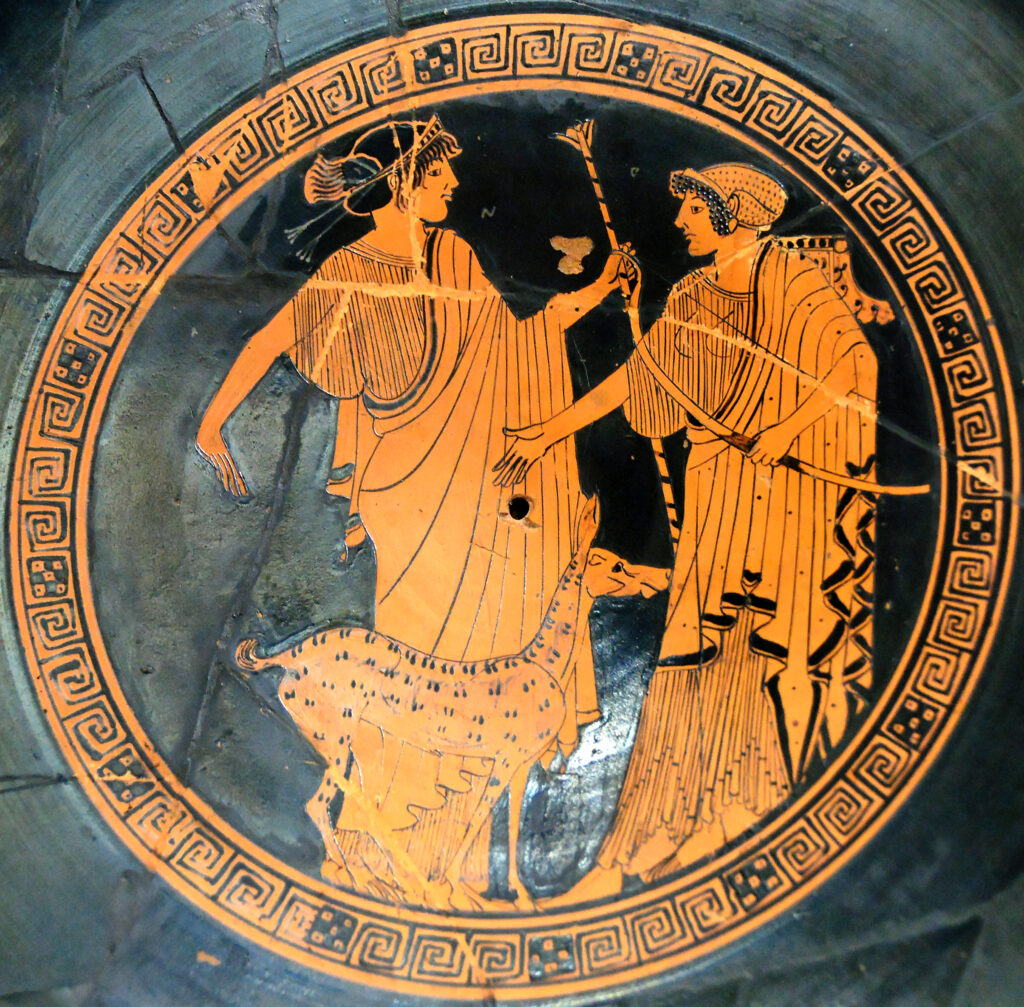
But let me finish now with Apollo, the quintessential Greek god. Apollo brings clarity, harmony and order. Apollo maintains all oppositions, all boundaries, and all distinctions. Apollo is in complementary opposition to Hermes. Hermes brings necessary flexibility; without him the world would ossify, but without Apollo’s clear boundaries and distinctions, there would be chaos; everything would devolve back to primordial incoherence.
Join Dr Heather Sebo on a journey through Northern Greece, in Macedonia, a landscape dotted with lakes and waterfalls, into the mountains and plains of Thrace and finally cross the northern Aegean Sea to the islands of Samothrace and Lemnos.
- View Tours Heather is currently leading
- Watch her online talk The Labyrinth and the Dancing Floor: Homer’s Mythic Crete
View our current selection of programs to Greece
Article images
Ancient Theatre, archaeological site in Limenas, Thasos, Greece.
The Council of Gods by Raphael, Public domain, via Wikimedia Commons
Combat de Minerve contre Mars by Jacques-Louis David, Public domain, via Wikimedia Commons
Thetis Receiving the Weapons of Achilles from Hephaistos by ArchaiOptix, CC BY-SA 4.0 <https://creativecommons.org/licenses/by-sa/4.0>, via Wikimedia Commons
“Hermes Ingenui”, Musei Vaticani, Public Domain via WikiCommons
Apollo and Artemis. Tondo of an Attic red-figure cup. Le Louvre, Paris. Public Domain via WikiCommons
Archaeological Park of Dion located at the foot of Mt Olympus, Macedonia. Greece. Image ID: 142684108 Copyright Viliamm | Dreamstime.com https://www.dreamstime.com/viliamm_info
These images have been resized for this website.


